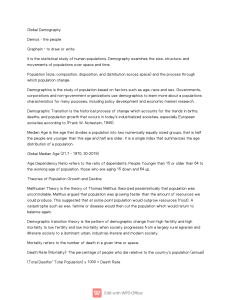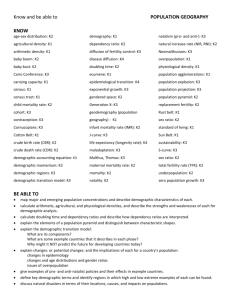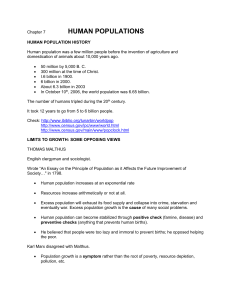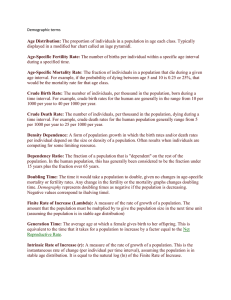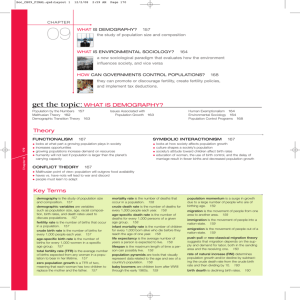Population Projection technical notes
advertisement
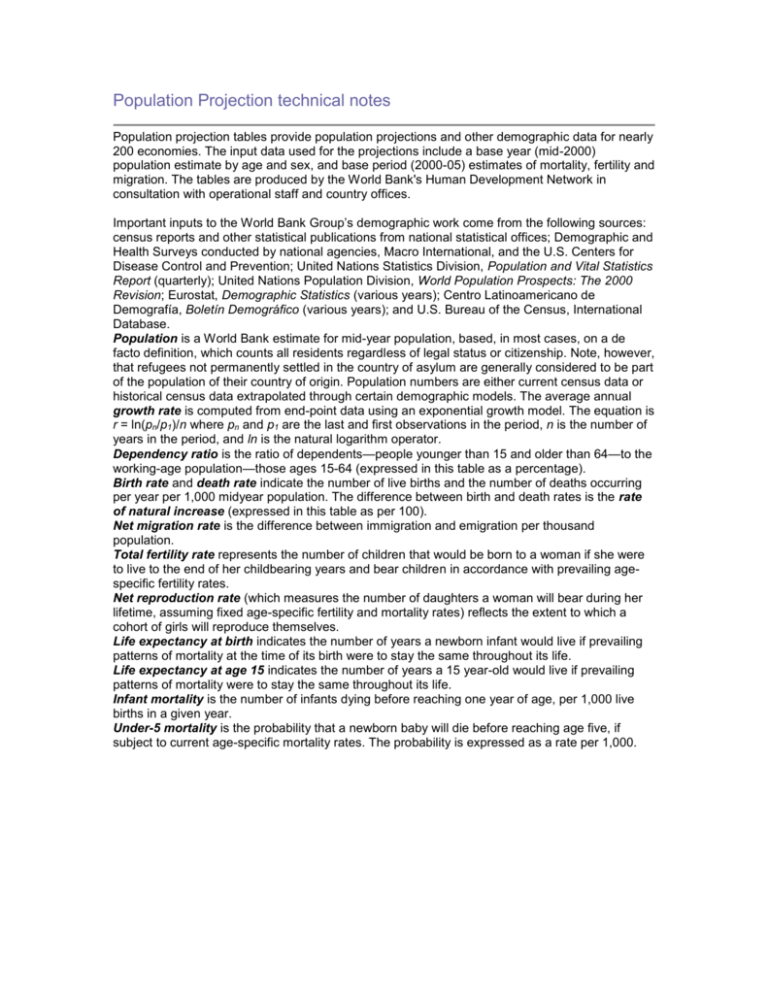
Population Projection technical notes Population projection tables provide population projections and other demographic data for nearly 200 economies. The input data used for the projections include a base year (mid-2000) population estimate by age and sex, and base period (2000-05) estimates of mortality, fertility and migration. The tables are produced by the World Bank's Human Development Network in consultation with operational staff and country offices. Important inputs to the World Bank Group’s demographic work come from the following sources: census reports and other statistical publications from national statistical offices; Demographic and Health Surveys conducted by national agencies, Macro International, and the U.S. Centers for Disease Control and Prevention; United Nations Statistics Division, Population and Vital Statistics Report (quarterly); United Nations Population Division, World Population Prospects: The 2000 Revision; Eurostat, Demographic Statistics (various years); Centro Latinoamericano de Demografía, Boletín Demográfico (various years); and U.S. Bureau of the Census, International Database. Population is a World Bank estimate for mid-year population, based, in most cases, on a de facto definition, which counts all residents regardless of legal status or citizenship. Note, however, that refugees not permanently settled in the country of asylum are generally considered to be part of the population of their country of origin. Population numbers are either current census data or historical census data extrapolated through certain demographic models. The average annual growth rate is computed from end-point data using an exponential growth model. The equation is r = ln(pn/p1)/n where pn and p1 are the last and first observations in the period, n is the number of years in the period, and ln is the natural logarithm operator. Dependency ratio is the ratio of dependents—people younger than 15 and older than 64—to the working-age population—those ages 15-64 (expressed in this table as a percentage). Birth rate and death rate indicate the number of live births and the number of deaths occurring per year per 1,000 midyear population. The difference between birth and death rates is the rate of natural increase (expressed in this table as per 100). Net migration rate is the difference between immigration and emigration per thousand population. Total fertility rate represents the number of children that would be born to a woman if she were to live to the end of her childbearing years and bear children in accordance with prevailing agespecific fertility rates. Net reproduction rate (which measures the number of daughters a woman will bear during her lifetime, assuming fixed age-specific fertility and mortality rates) reflects the extent to which a cohort of girls will reproduce themselves. Life expectancy at birth indicates the number of years a newborn infant would live if prevailing patterns of mortality at the time of its birth were to stay the same throughout its life. Life expectancy at age 15 indicates the number of years a 15 year-old would live if prevailing patterns of mortality were to stay the same throughout its life. Infant mortality is the number of infants dying before reaching one year of age, per 1,000 live births in a given year. Under-5 mortality is the probability that a newborn baby will die before reaching age five, if subject to current age-specific mortality rates. The probability is expressed as a rate per 1,000.

